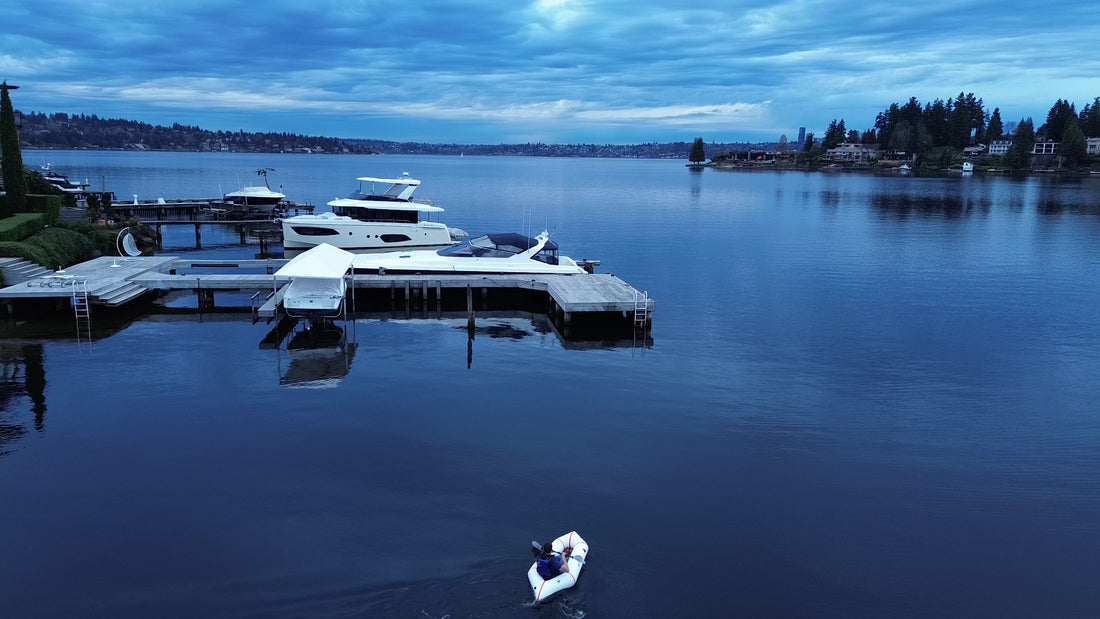Packrafting is an exhilarating way to explore waterways, combining the joys of backpacking with the freedom of navigating rivers and lakes. While the thrill is undeniable, ensuring your safety is paramount for a truly enjoyable adventure. In this guide, we'll walk you through essential packrafting safety tips to make sure your water escapades are not only exciting but also secure.
1. Gear Up for Safety:
- PFD (Personal Flotation Device):
Always wear a properly fitted PFD. It's your lifeline in case of unexpected challenges on the water.
- Helmet:
If you plan to tackle white water rapids, a helmet is non-negotiable. Protect your head from potential collisions with rocks or other obstacles.
- Appropriate Footwear:
Wear sturdy, non-slip footwear to provide traction on wet surfaces and protect your feet.
- Dry Bags:
Secure your valuables and gear in waterproof dry bags to prevent them from getting wet, especially in challenging water conditions.
- Repair Kit:
Carry a packraft repair kit with patches and adhesive to address any unexpected leaks or damages.
2. Know Your Packraft:
- Familiarize Yourself:
Before hitting the water, spend time getting acquainted with your packraft. Understand its features, inflation and deflation process, and any specific guidelines from the manufacturer.
- Weight Capacity:
Be mindful of your packraft's weight capacity. Overloading can affect stability and safety.
3. Develop Essential Skills:
- Paddling Techniques:
Learn and practice basic paddling strokes like the forward stroke, draw stroke, and sweep stroke for effective maneuvering.
- Self-Rescue:
Practice self-rescue techniques, including getting back into your packraft and handling capsizes.
4. Plan Your Route:
- Research Waterways:
Know the water conditions, difficulty levels, and potential hazards of the waterways you plan to explore.
- Check Weather Conditions:
Stay updated on weather forecasts. Avoid paddling in adverse conditions like storms, high winds, or lightning.
- Inform Someone:
Always let someone know your itinerary, including your planned route and expected return time. In case of emergencies, this information is crucial for timely assistance.
5. Safety in Rapids:
- Assess Rapids:
Before attempting white water rapids, assess their difficulty level and your skill readiness.
- Follow White Water Safety Guidelines:
Adhere to white water safety guidelines. If you're new to packrafting in rapids, consider taking a course to enhance your skills.
6. Practice Leave No Trace:
- Respect the Environment:
Adhere to Leave No Trace principles. Respect the natural habitat, wildlife, and other adventurers by minimizing your environmental impact.
7. Emergency Preparedness:
- Carry Communication Devices:
Have a reliable communication device, such as a waterproof radio or a satellite communicator, for emergency situations.
- First Aid Kit:
Pack a comprehensive first aid kit and know how to use it. Be prepared for common injuries and ailments that may occur during your packrafting adventures.
Conclusion: Safe and Thrilling Adventures
Packrafting is an incredible way to connect with nature, but safety should always be a priority. By gearing up with the right equipment, acquiring essential skills, planning your routes wisely, and staying vigilant to changing conditions, you can ensure that your packrafting experiences are not only thrilling but also safe and memorable. So, inflate your packraft, paddle responsibly, and embark on water adventures with the confidence that safety is your trusted companion on every journey.

